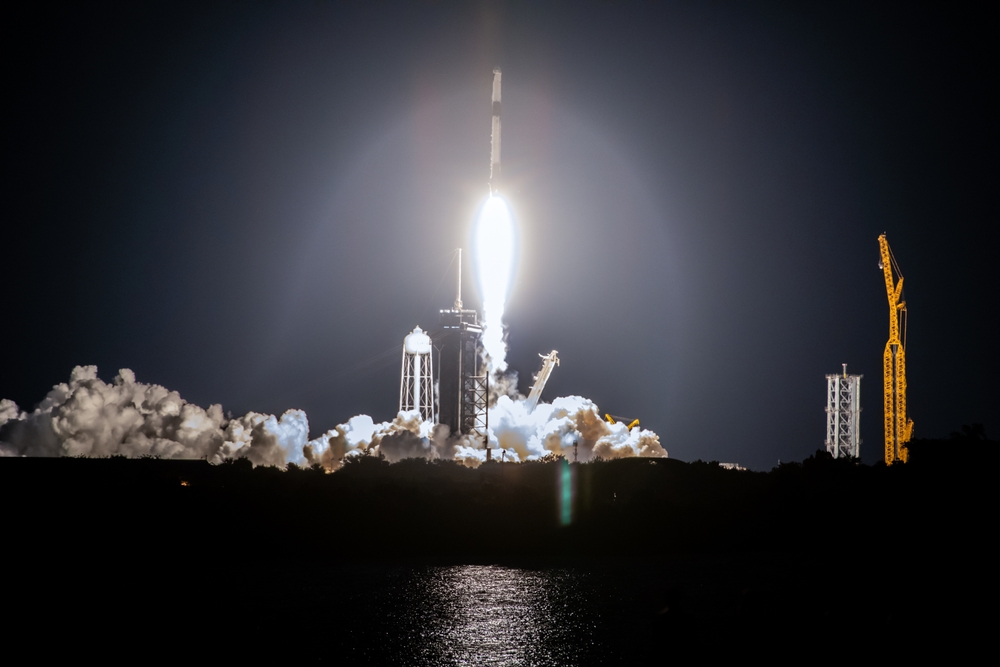The Dawn of a New Frontier: Why Did the Commercialization of Space Happen?
Posted on Categories Discover Magazine

When humans first set their sights on the stars, space exploration was dominated by superpowers, national pride, and the race to outdo rival nations. After all, the Apollo Moon landings were carried out as more of a statement of Cold War superiority than a business venture.
But in recent decades, a shift has occurred — a shift that has slowly seen the reins of space exploration handed from government agencies to commercial enterprises. The commercialization of space is no longer a futuristic dream; it’s happening now. But why? What kickstarted this transition from state-controlled missions to entrepreneurial ventures?
The answer lies in a convergence of technological advancements, economic incentives, and visionary leadership.
Technology Makes Space Exploration More Affordable
The commercialization of space was, in part, made possible by giant leaps in technology. During the 20th century, space exploration required vast resources and capital, limiting the players to nation-states with deep pockets.
However, as technology evolved, the cost of launching payloads into orbit began to decrease. Innovations in reusable rocket technology, particularly spearheaded by SpaceX, have significantly reduced the cost of access to space. For example, SpaceX’s Falcon 9 rocket can now be reused more than 10 times with minimal refurbishment, slashing the price of launches and making space more accessible to private companies.
These technological advancements weren’t limited to rockets, either. Satellite technology also evolved, becoming smaller, cheaper, and more efficient. And the miniaturization of satellites, commonly known as CubeSats, allowed startups and even universities to develop, fund, and launch their own space missions, something that was unimaginable just a few decades ago.
Read More: 15 of the Most Life-Changing Spacecraft and Missions That Fueled Our Curiosity
The Economic Factors of the Space Industry Boom
Space is not just the final frontier; it’s potentially a trillion-dollar industry. The economic incentives for space ventures have played a crucial role in the transition to increased commercialization. For instance, the commercial satellite industry alone (encompassing communication, Earth observation, and navigation services) generated $285 billion in revenue in 2023, according to the Satellite Industry Association.
Governments also recognized the economic potential of space commercialization. In the U.S., the passage of the Commercial Space Launch Act of 1984 was a pivotal moment. This legislation encouraged private enterprises to get involved in space by allowing commercial launches to be conducted on a routine basis, with government oversight but not control. This regulatory shift signaled to the market that space was open for business, and entrepreneurs responded.
The privatization of the International Space Station (ISS) is a shining example of how economic incentives can drive the commercialization of space. For instance, NASA’s Commercial Crew Program, which now routinely contracts with SpaceX to ferry astronauts to the ISS, is not just a cost-saving measure; it also prevents NASA from having to rely on other nations, such as Russia, for rides to space.
Read More: ‘New Era’ Begins with Crewed Launch of SpaceX and NASA Crew-1 Mission
Visionary Entrepreneurs Shape the Space Industry
Technological advancements and economic incentives may have provided the foundation, but visionary leadership arguably pushed space commercialization over the threshold. For example, Elon Musk, Jeff Bezos, and Richard Branson are more than just wealthy entrepreneurs — they’re individuals with a deep passion for space.
Musk’s goal of making humanity a multiplanetary species by colonizing Mars has driven SpaceX to innovate relentlessly. Similarly, Bezos’ vision of moving all polluting and heavy industry off Earth has fueled Blue Origin’s ambitious projects. Meanwhile, Branson, with Virgin Galactic, aims to make space tourism a reality, opening up space to more non-professional astronauts than ever before.
Musk, Bezos, and Branson have not only invested billions of their own money into their respective ventures, but they’ve also drawn attention to the potential of space as the next economic frontier. So, whether they succeed in their goals or not, it’s clear their efforts to reduce the cost of space travel, coupled with their ability to inspire investors and the public, have been instrumental in advancing the commercial space race.
Read More: How Elon Musk’s Historic Launch Changes the Future of Space Exploration
What’s Next for Space Exploration?
The commercialization of space is not just about profit — although that’s obviously a large part of it. Space commercialization is also about expanding humanity’s presence beyond Earth.
In the next few years, humans will likely again step foot on the Moon. And within the next several decades, we may be landing on Mars and mining asteroids for rare minerals. If those things happen, commercial companies will surely be at the forefront, pushing the boundaries of what’s possible.
Read More: Financial Constraints Have Kept Humans From Returning to the Moon – Until Now
Article Sources
Our writers at Discovermagazine.com use peer-reviewed studies and high-quality sources for our articles, and our editors review for scientific accuracy and editorial standards. Review the sources used below for this article:
Jake Parks is a freelance writer and editor who specializes in covering science news. He has previously written for Astronomy magazine, Discover Magazine, The Ohio State University, the University of Wisconsin-Madison, and more.